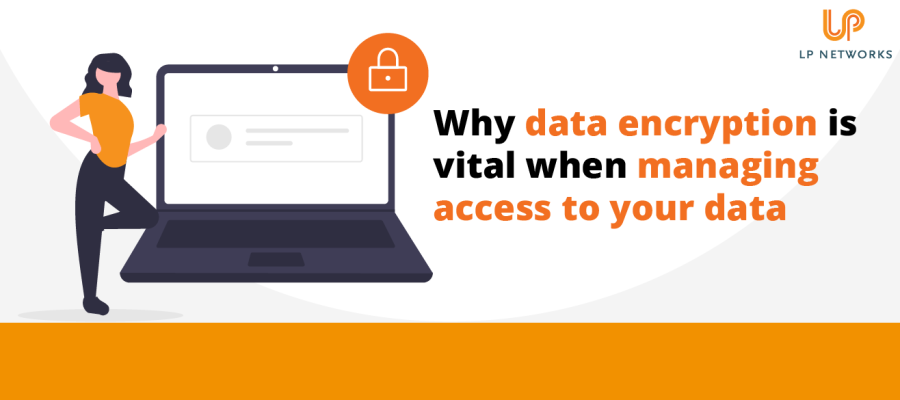- Solutions For
Specialist IT Support Services for:
- Popular Services
- Security
Security
- Our Expertise
Our Full Range of IT Services
- Learn
- About Us
- Contact
Posted 14th December 2022


LP Lowdown, is LP Network's regular free newsletter designed to keep you up to date with all the latest IT news, security updates, and available products. Learn more.
Nearly half of businesses have experienced a data breach in the last five years. A data breach is not only disruptive and time-consuming for the business concerned, but there is also every risk that businesses can also end up having to pay legal settlements to customers and clients who might be affected by the breach, in addition to a fine from the ICO.
More than ever, businesses are looking at how they can secure their data to ensure it is protected from hackers and cyber-attacks. Data encryption is an incredibly powerful security measure which can be used effectively throughout all businesses.
Well, data makes a business go around. It is a crucial aspect in any place of work. Data needs to be protected to ensure that it cannot be exploited by hackers or cyber criminals.
Have you heard of security misconfiguration? It’s when security settings are set up incorrectly or when your security controls are still set up with the username or password given to you by your provider. Your system’s configuration needs to comply with various standards, and if your settings are incorrect or not secure, it means that your system is open to attack. If your data is encrypted, even if hackers can access your system, it will mean that your data is still safe.
We all know the potential risks of using third-party apps. They can easily put your data at risk because there may be lax security in their development which could open a route for a cyber-criminal to attack. Third-party apps are often used to spread ransomware. However, if your data was encrypted, third-party apps would not be able to access your data.
When it comes to best practice, firstly ensure your business has a data security policy. You are likely to be using many different tools and platforms in your business on a day-to-day basis, and data can be gathered very easily. This is where a data security policy comes into play. This is a document that dictates how you use and manage your data. It should include all the data that your business stores, including local storage, cloud storage, databases and servers. It’s important that all types of data are protected. The data security policy does then need to be enforced, and there are various ways you can do this.
This is a method that ensures businesses regulate who can access the data. This controls access to the system, and passwords, PINs or security tokens are used to grant legitimate access. Implementing access control will reduce the risk of your data being attacked.
This system ensures that access to data is appropriately managed. Zero trust can also be implemented. Zero trust is a framework that secures your data. It assumes that your network is constantly at risk. Therefore, it needs all users to be authenticated before they can access the system and therefore access data.
Parts of an access management system could include multi-factor authentication, third-party/subcontractor management, ensuring that the system is easy to use and compatibility with different networks.
Data encryption is an intuitive tool that, when set up correctly, will help you to protect your business and its data.
If you would like to speak to us about creating a data security policy, reviewing your current arrangements, or strengthening your current security arrangements, please book a call with Lee.

Complete this quick form and LP Lowdown will arrive to your inbox in minutes.

